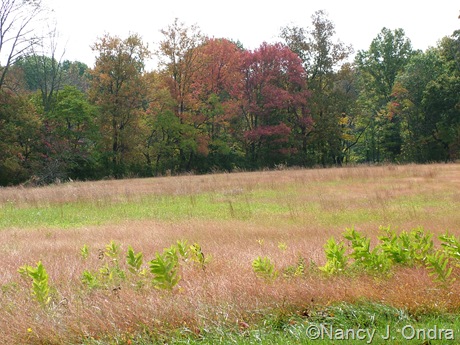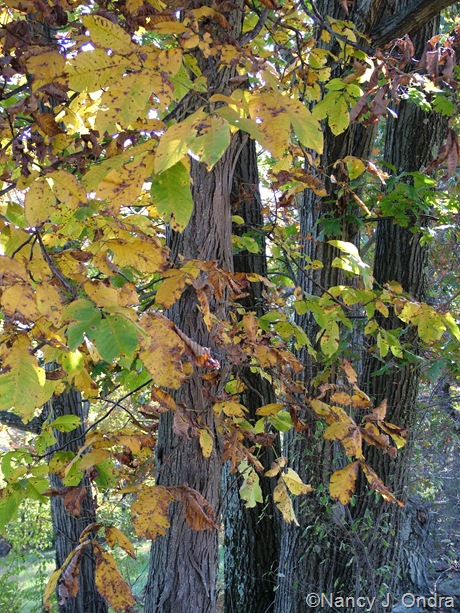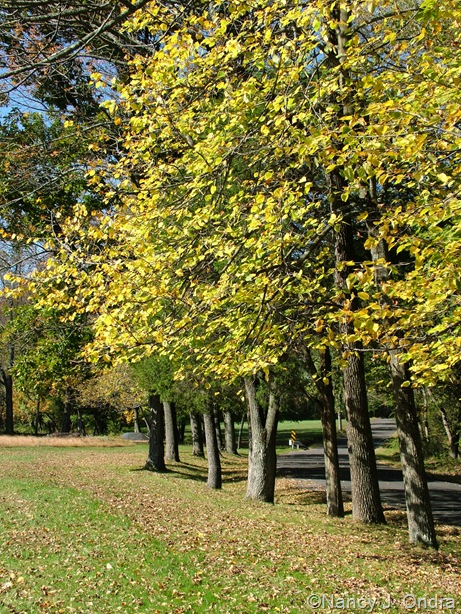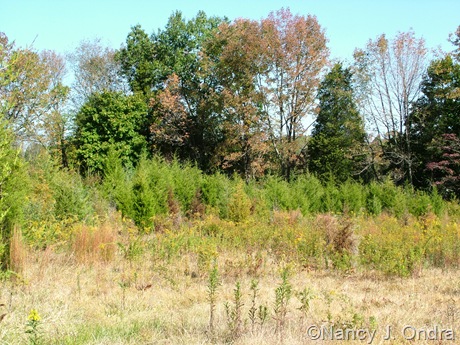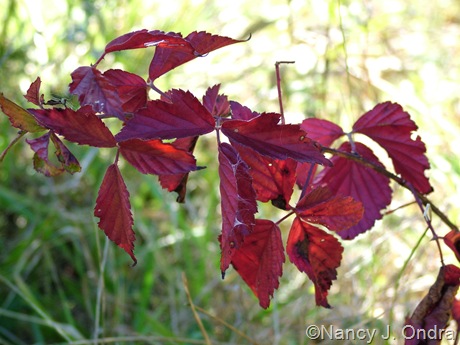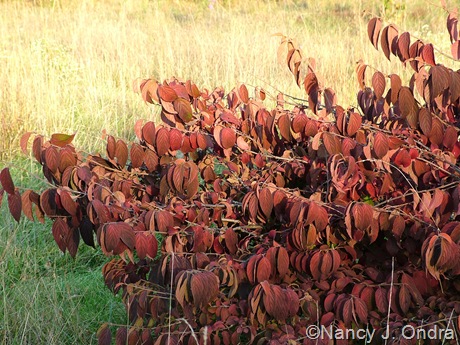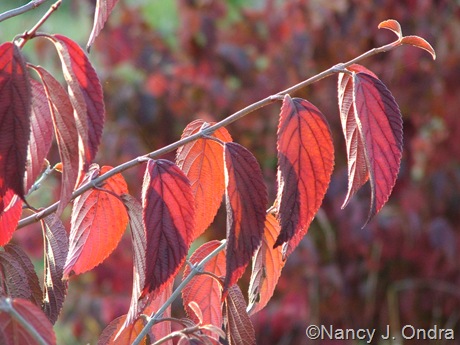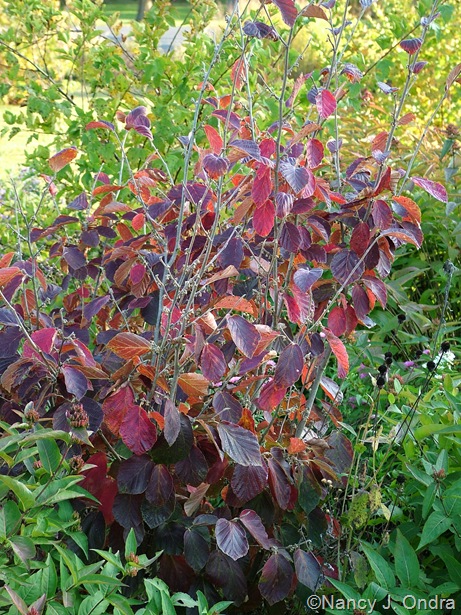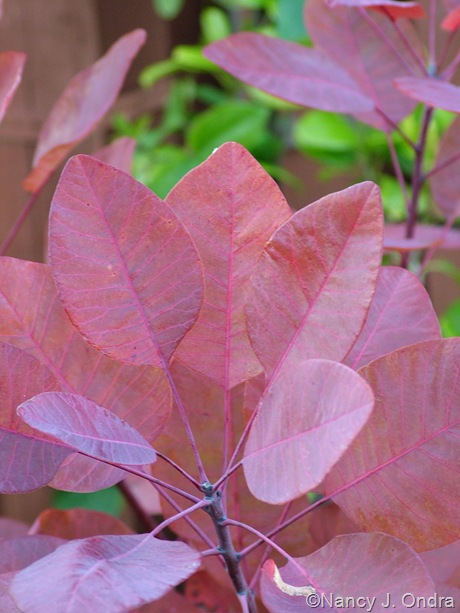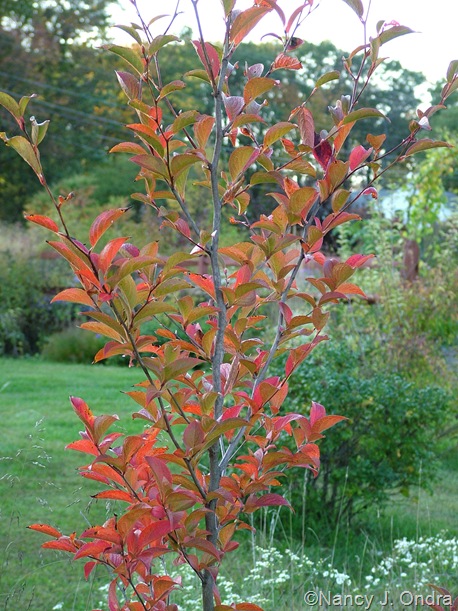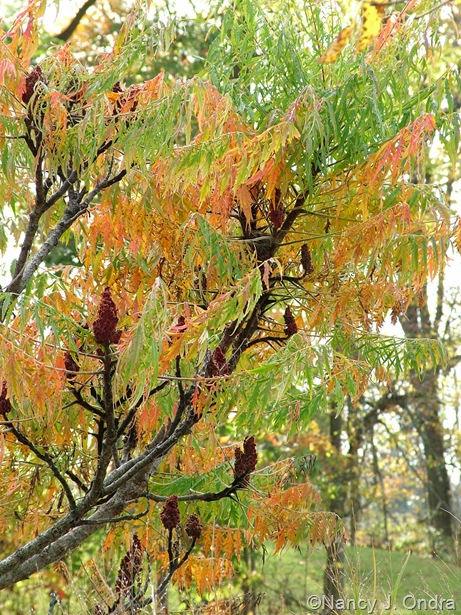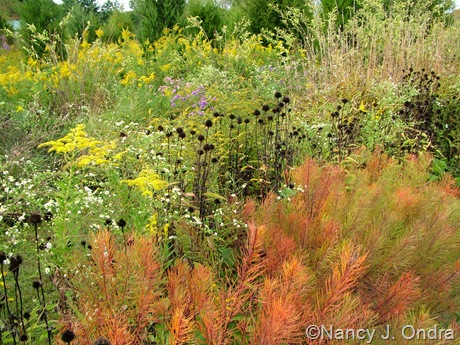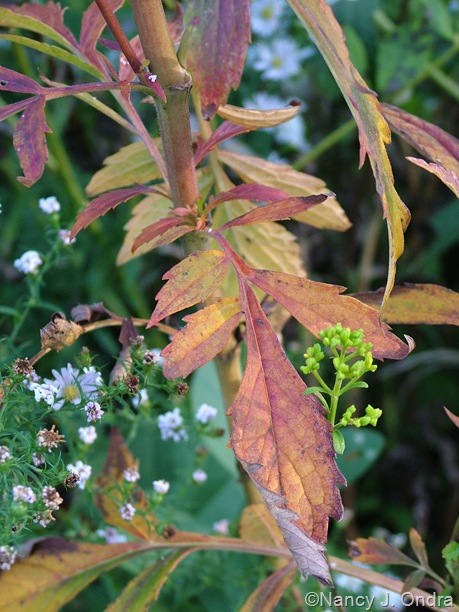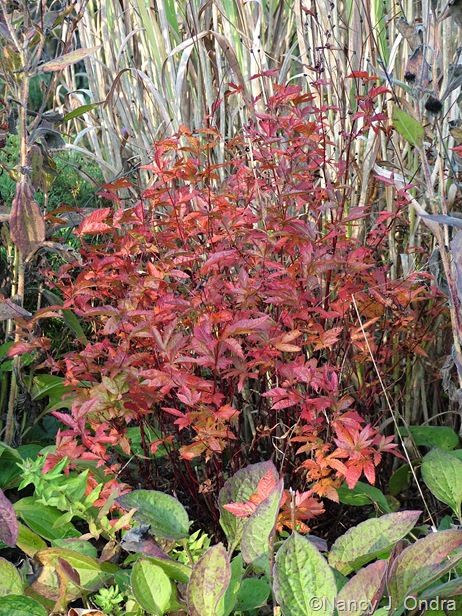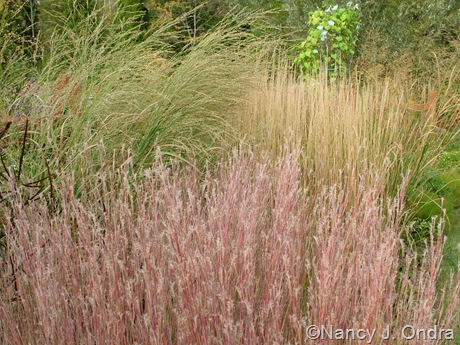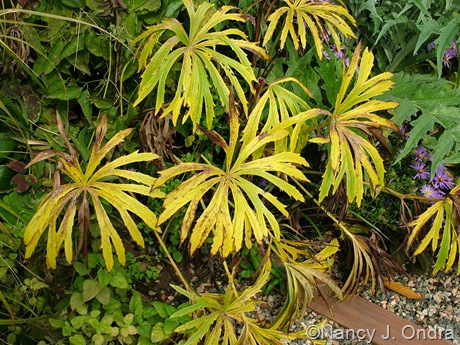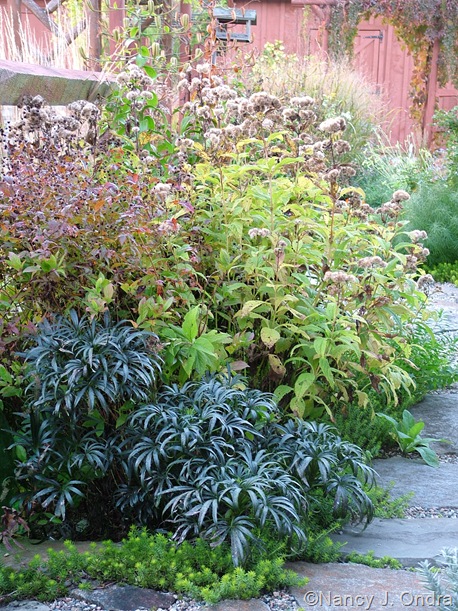 For the last several years, Dave at The Home Garden has been hosting The Fall Color Project: a meme to track the progress of peak fall foliage color. And every year, I have trouble figuring out the perfect time to do my post. This autumn, I think we’re lucky to have any fall color, after the drought stress of the summer and the heavy rains and winds of the last two weeks. Some trees are already bare, while others are just now starting to color up.
For the last several years, Dave at The Home Garden has been hosting The Fall Color Project: a meme to track the progress of peak fall foliage color. And every year, I have trouble figuring out the perfect time to do my post. This autumn, I think we’re lucky to have any fall color, after the drought stress of the summer and the heavy rains and winds of the last two weeks. Some trees are already bare, while others are just now starting to color up.
My favorite meadow is mostly blond right now, but well, that counts as a color. It looks like a solid stand of Indian grass (Sorghastrum nutans), but some little bluestem (Schizachyrium scoparium) has moved in over the last few years.
Some of the other fields on my parents’ farm (above and below) are more colorful. Unfortunately, that pretty coppery haze is from Japanese stilt grass (Microstegium vimineum), an invasive annual grass. These fields were hayed in July, and the stilt grass was pretty much the only thing that grew back during the summer drought.
We usually mow the fields closer to the woods only every few years, in early spring, and they are much more diverse. Hooray for glorious goldenrods, among other beauties.
In the hedgerows, the flowering dogwoods (Cornus florida) are about ready to drop their red leaves, but the sassafras (Sassafras albidum) – above and below – are just starting to color up.
The shagbark hickories (Carya ovata) – above and below – are a dependable source of yellow fall color.
I don’t recall the American lindens (Tilia americana) – above and below – being such a bright yellow other years, though.
Back home at Hayefield – above and below – the meadow colors are mostly tans and rusts from the grasses, yellow from the goldenrods, and bright greens from the Eastern red cedars (Juniperus virginiana).
Closer to ground level, there are small splashes of intensity, such as the bright red of a wild blackberry (Rubus fruticosus, I think).
In The Shrubbery, there are some other wonderful reds:
Viburnum plicatum (above and below).
Above, ‘Gingerbread’ witch hazel (Hamamelis x intermedia); below, ‘Grace’ hybrid smokebush (Cotinus).
Above, a stewartia (Stewartia pseudocamellia, I think); below, cutleaf staghorn sumac (Rhus typhina ‘Laciniata’).
It’s easy to see why trees and shrubs get all the press for showy fall foliage, but many of my most favorite autumn leaf colors are from herbaceous perennials in the garden.
Above is a patch of Arkansas bluestar (Amsonia hubrichtii) that had been very drought-stressed earlier, looking especially showy right now in combination with goldenrods, asters, and purple coneflower (Echinacea purpurea) seedheads.
Below, golden lace (Patrinia scabiosifolia).
Above, Bowman’s root (Gillenia stipulata); below, flame grass (Miscanthus ‘Purpurascens’).
Above, ‘The Blues’ little bluestem (Schizachyrium scoparium) with ‘Dewey Blue’ switch grass (Panicum amarum) and ‘Karl Foerster’ feather reed grass (Calamagrostis x acutiflora).
Below, a few pretty yellows, starting with shredded umbrella plant (Syneilesis aconitifolia).
Above, Joe-Pye weed (Eupatorium maculatum) with Helleborus foetidus, ‘Angelina’ sedum, and Bowman’s root.
Below, giant coneflower (Rudbeckia maxima) with ‘Cassian’ fountain grass (Pennisetum alopecuroides) and ‘Northwind’ switch grass (Panicum virgatum).
And above, blackberry lily (Belamcanda chinensis) with ‘Redbor’ kale and Knock Out roses (Rosa ‘Radrazz’). Hey – how did those flowers sneak in? I’d better stop here and save the remaining floral action for Bloom Day at Hayefield on Friday. For now, visit Dave’s main Fall Color Project 2010 page and his Friday updates to find more fall color posts from other parts of the country.


